Don't let harsh sun and high heat harm your succulents! Heat, unlike frost (temps 32 degrees F and lower), usually isn't a concern for succulents. Although some tend not to thrive in temps above 80 or 90 degrees F, the majority can handle more than you're personally comfortable with...as evidenced by greenhouse temperatures that soar into the triple digits on summer days. However, heat plus sun can be deadly to succulents. Unless they're desert cacti or agaves, most smooth-leaved succulents need sun protection in summer, especially above 80 degrees.
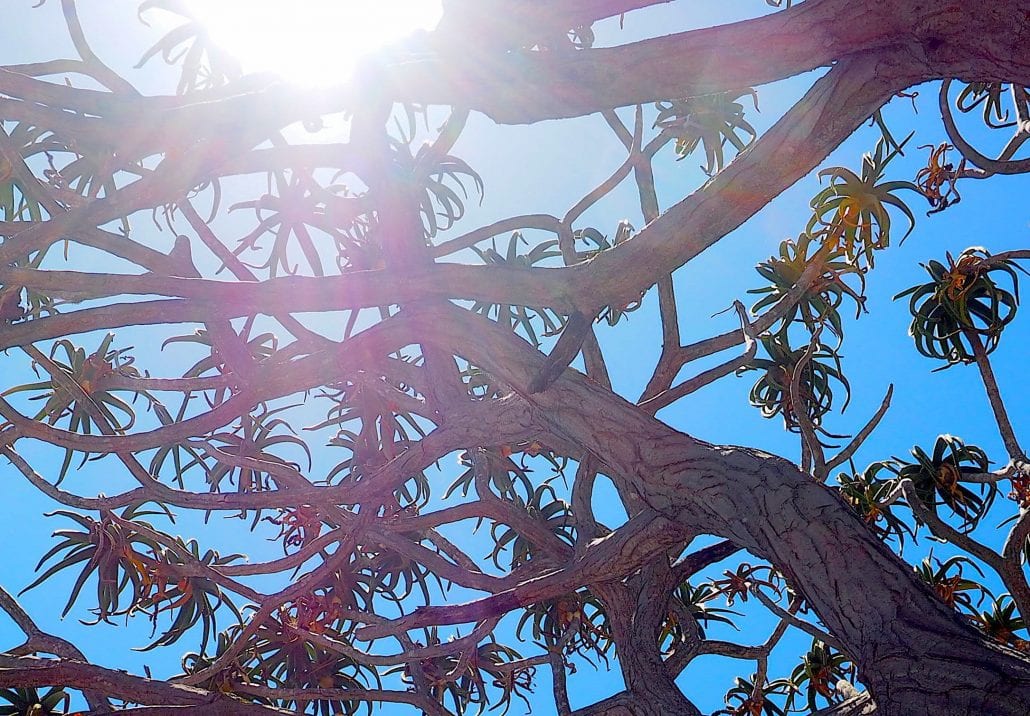
Summer-stressed Aloe bainesii tree
If you live in an arid climate ~
- Know your property's orientation to the sun. In North America, plants growing on your home's north side will get the least amount of sun exposure; those on the south, the most. East-facing gardens like mine get morning sun and afternoon shade. Gardens facing west have afternoon sun and morning shade.
- "Bright shade" (no direct sun but not deep shade) is ideal for non-desert succulents in mid-afternoon when temperatures peak. Bright shade is essential for low-light succulents such as haworthias. Learn more on the Shade Succulents page of this site. See my Shade Succulents video.
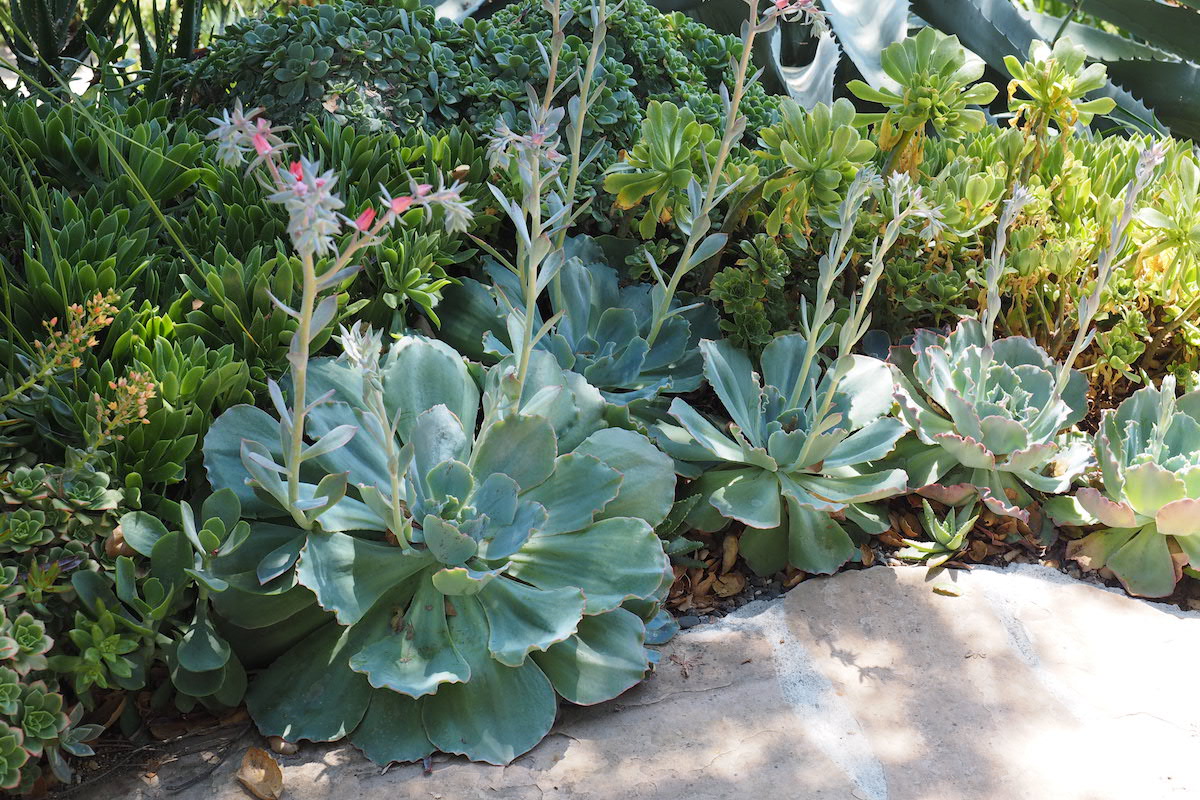
Above: Echeverias on the left in bright shade are healthy but have lost color. Those in greater sun have red edges, but being somewhat stressed, are smaller.
- Whenever you buy a new plant, notice where it was located in the nursery. Was it out in the open or beneath shade cloth? Even if it's a "full sun" succulent---like an agave---if it was growing in a sheltered area, it'll need to be "hardened off" (shaded, especially in the afternoon) until it acclimates. Such exposure is similar to tanning: Start with 30 min. of sun and increase it by an hour or so each day.
- Give aloes and crassulas enough sun to turn hues of red and orange but not so much that leaf tips shrivel or burn---at least half a day. (See "How to Stress Succulents and Why You Should.")

Above: This jade (Crassula ovata) is stressed by heat and dryness. The plant is slowly draining its leaves to stay alive. But after irrigation or rain (which could be months away), leaves will be plump and greener.
- Because sunburned stems are less able to transmit moisture from roots to leaves, be sure to cover exposed, horizontal stems of trailing succulents (aloes, senecios, othonna and the like) with dry leaves or mulch.
- Protect newly installed plants and in-ground succulents susceptible to sun-scorch with floating row covers (ideally), shade cloth, old sheets or temporary shade structures. I use old window screens. In a pinch, set leafy tree trimmings upright in the ground next to a plant you want to protect, on the side that gets the most sun. Or use outdoor furniture, keeping in mind the sun moves throughout the day.
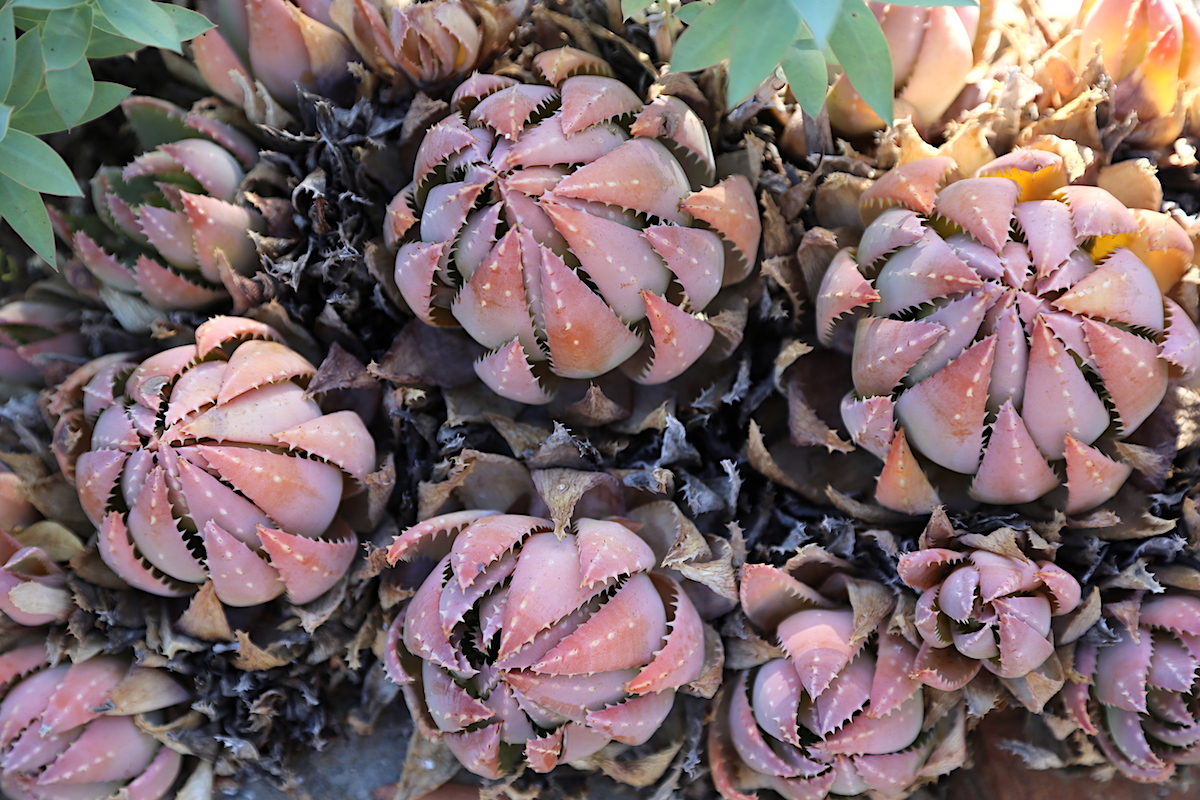
Above: Beautiful but stressed, Aloe brevifolia has turned from blue to pink and closed its rosettes.
- Understand how plants protect themselves. Succulents can't scurry off to shade when sun is intolerable, so some provide their own. Rosette succulents such as dudleyas, aeoniums and certain aloes will close their rosettes to protect their vital cores. Lower leaves that dry but don't fall off have a purpose: They shade vulnerable stems in summer and insulate them from cold in winter.
- Plant trees and shrubs that'll provide shade where needed during long, hot summer afternoons. (For low-water varieties good in succulent gardens, see the Companion Plants chapter of Designing with Succulents, 2nd ed.).
What sunburn looks like

This agave's leaves are floppy, which stretches (and weakens) the cells where they're most exposed to sun.
White, beige or black patches on succulents indicate sunburn, meaning cells have been irrevocably damaged---an effect similar to frost. Although the plant is fine, scars will last as long as the leaf does.
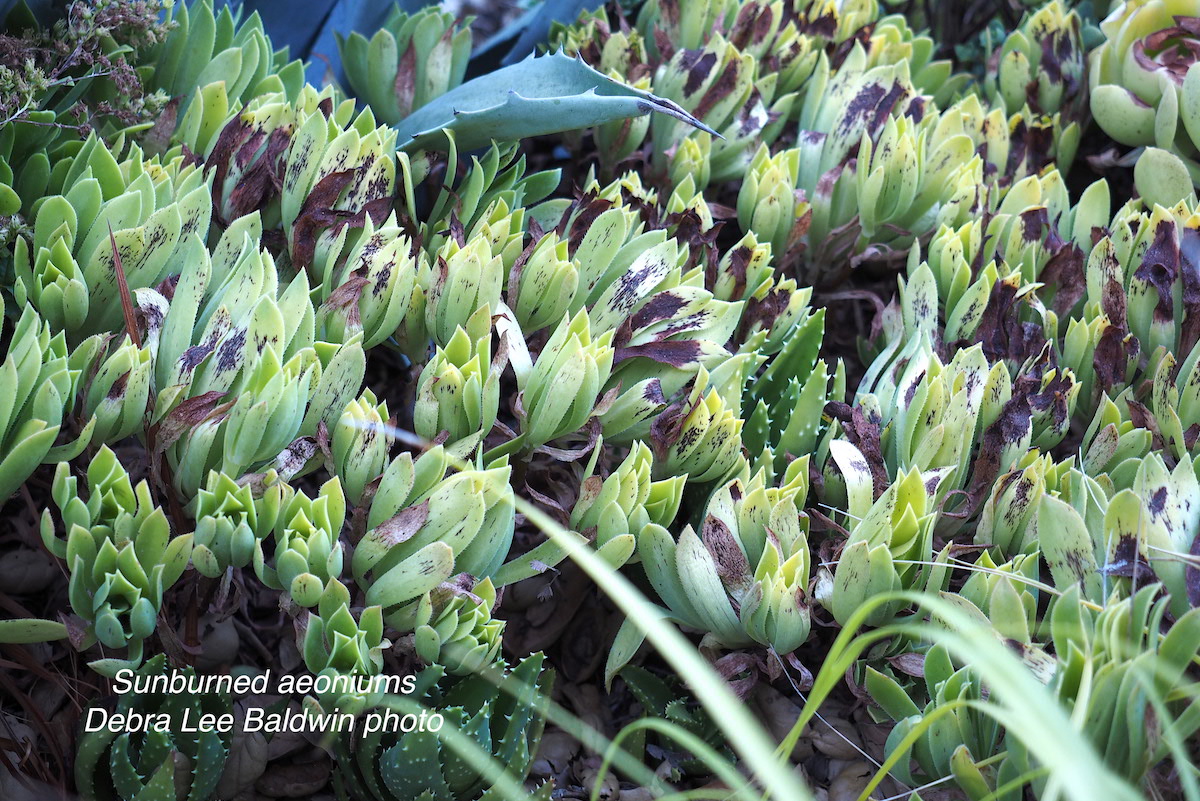
Sunburn on these aeoniums is mostly on the underside of the lowest leaves...which they'll lose anyway in a few months. Pretty efficient, wouldn't you agree?

Same aeoniums several months later. A few remaining burned leaves are barely noticeable.
If marred areas are on outer leaves, so much the better; new growth from the center of the rosette will conceal sunburned areas over time. In any case, lower leaves---damaged or not---naturally wither and fall off. Depending on the succulent and the season, recovery from sunburn may take several months to a year.
Related info on this site
Post-Summer Succulent Concerns
After a brutal, early-September heat wave, I address ten common, post-summer succulent concerns. You’ll see them in my a new six-minute video: Post-Summer Care for Succulents (6:49). It’s a candid, warts-and-all, behind-the-scenes, damage-control tour.
Late Summer Succulent Care
These late-summer care essentials for succulents come from my own experience with growing hundreds of varieties for decades in my inland Southern CA garden. Excessive heat and sun can do as much damage as midwinter frosts. Here’s what I do routinely every year.
The post Summer Care for Succulents: Heat and Sun Concerns appeared first on Debra Lee Baldwin. Copyright © Debra Lee Baldwin.
from Debra Lee Baldwin https://ift.tt/ErtbqLD
via IFTTT


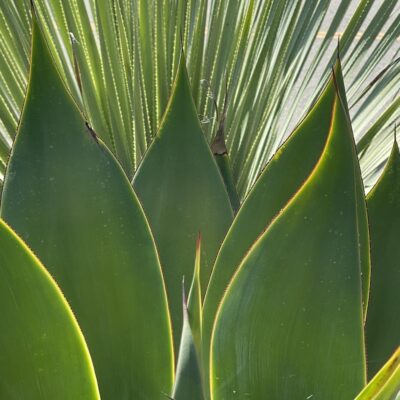
No hay comentarios:
Publicar un comentario